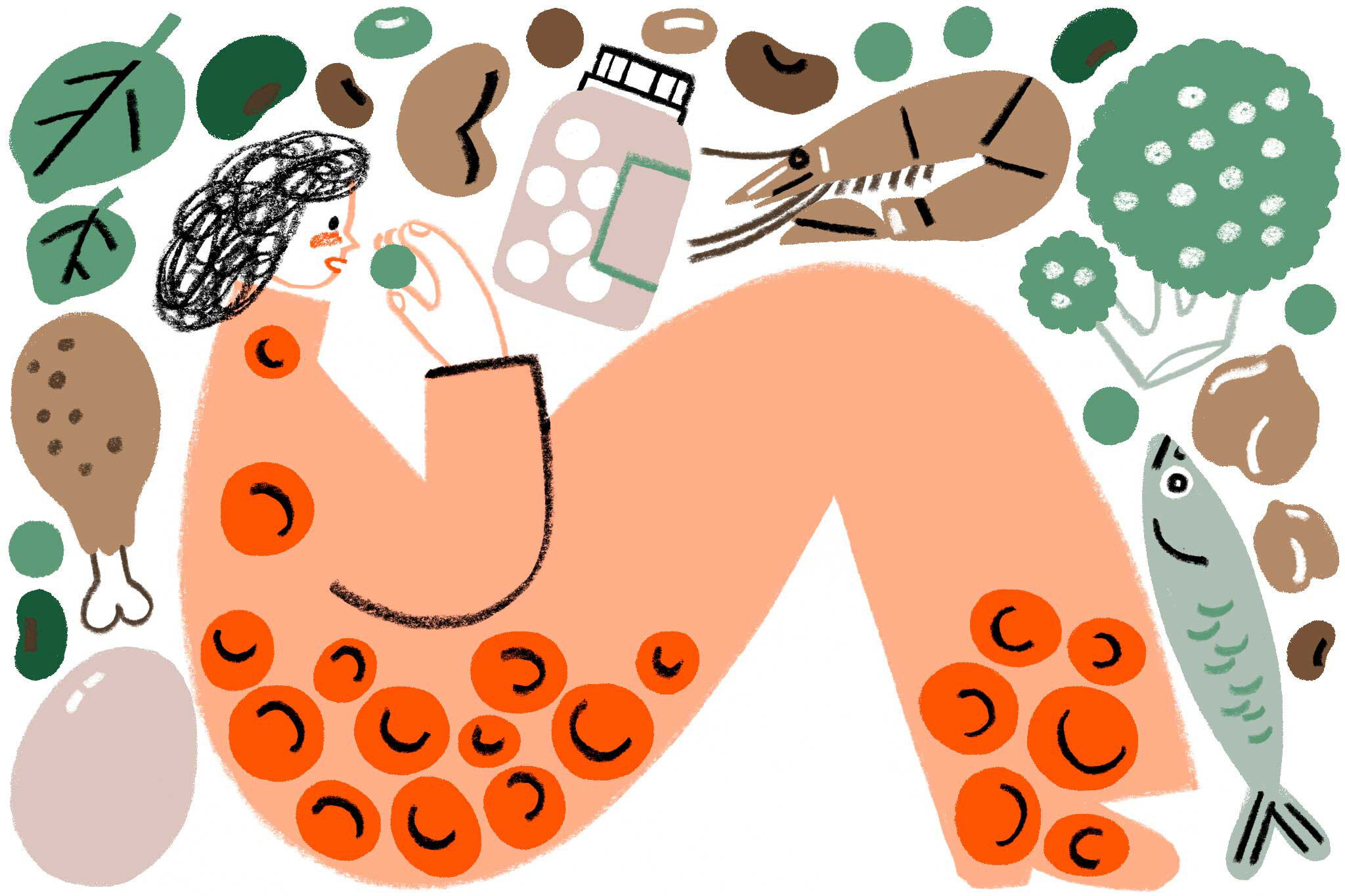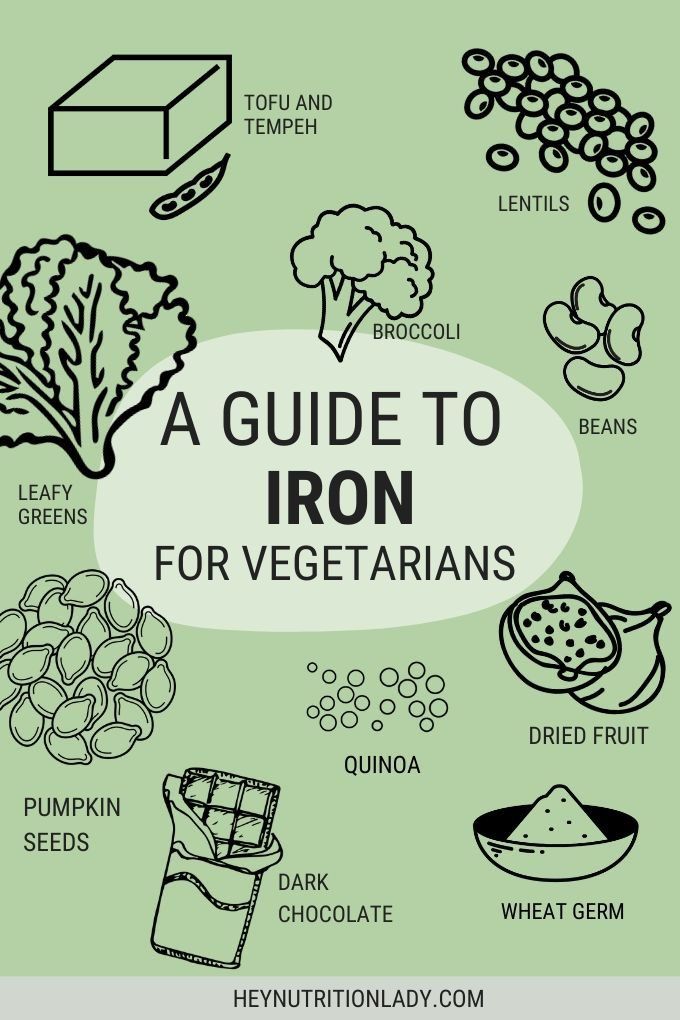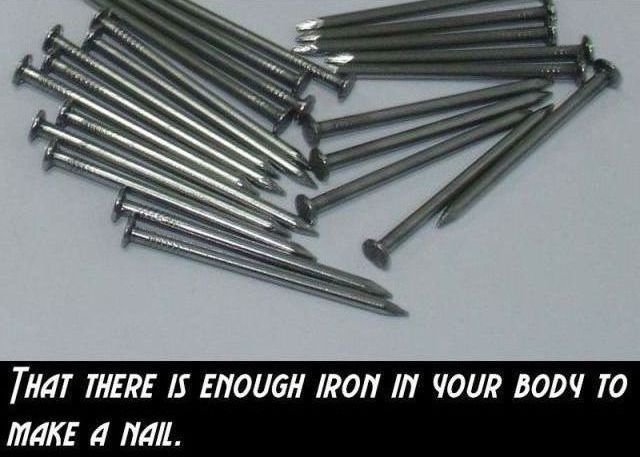Not enough iron. The Link Between Blood Donation and Iron Deficiency: Understanding the Risks and Preventative Measures
Can blood donors suffer from iron deficiency? What are the causes, symptoms, and treatments for this condition? Explore the connection between blood donation and spoon nails, a potential sign of iron deficiency.
Exploring the Connection Between Blood Donation and Iron Deficiency
Donating blood is a generous and altruistic act that can save lives, but it also comes with potential risks. One of the lesser-known consequences of frequent blood donation is an increased risk of iron deficiency, a condition that can lead to a variety of health issues.
Understanding Spoon Nails: A Potential Sign of Iron Deficiency
Spoon nails, also known as koilonychia, are a distinctive nail condition that can be a telltale sign of iron deficiency anemia. These nails appear thin, soft, and concave, resembling a small spoon that can hold a drop of water. While spoon nails can have other causes, such as trauma, certain diseases, or genetic factors, iron deficiency is the most common culprit.

What Causes Spoon Nails?
The primary cause of spoon nails is iron deficiency anemia, a condition where the body’s red blood cell count is lower than normal. This can result in a range of symptoms, including fatigue, pale skin, shortness of breath, and weakness. Spoon nails may affect one or more nails, and can also occur in toenails.
Other Potential Causes of Spoon Nails
While iron deficiency is the most common cause of spoon nails, there are other factors that can contribute to this condition, including:
- Trauma to the nail
- Chemotherapy or radiation therapy for cancer
- Frequent exposure to petroleum solvents or detergents
- Malabsorption of nutrients
- Certain medical conditions, such as celiac disease, diabetes, and lupus
- Hereditary factors
- Environmental factors, such as living at high altitudes or in rural areas
The Risks of Iron Deficiency for Blood Donors
Blood donors are particularly susceptible to iron deficiency, as each donation can deplete the body’s iron stores. Over time, this can lead to a gradual depletion of iron, resulting in anemia and the potential development of spoon nails.

How Common is Iron Deficiency in Blood Donors?
Studies have shown that a significant percentage of blood donors, particularly those who donate frequently, experience iron deficiency. In fact, some research suggests that up to 50% of regular blood donors may develop iron deficiency, depending on factors such as gender, age, and frequency of donations.
Diagnosing and Treating Iron Deficiency in Blood Donors
If you’re a blood donor and notice changes in your nail appearance, it’s important to seek medical attention. Your doctor can perform a physical examination, review your medical history, and conduct blood tests to determine the underlying cause of your spoon nails.
Treatment for Iron Deficiency Anemia
If your spoon nails are caused by iron deficiency anemia, the treatment typically involves a combination of iron supplements and dietary changes to increase your intake of iron-rich foods. Your doctor may also recommend taking vitamin C, as it can help your body better absorb iron from your diet.

Preventing Iron Deficiency in Blood Donors
To help maintain healthy iron levels and prevent the development of spoon nails, blood donors can take several preventive measures:
- Consult with your doctor about the appropriate frequency of blood donations based on your individual iron levels
- Incorporate more iron-rich foods into your diet, such as red meat, poultry, seafood, beans, and dark leafy greens
- Consider taking an iron supplement, as recommended by your healthcare provider
- Avoid using nail polish or picking at your nails, which can further damage the nail bed
- Keep your nails clean and well-lubricated to prevent infection and further deterioration
Conclusion
Donating blood is a noble act that can save lives, but it’s important for donors to be aware of the potential risks, such as iron deficiency and the development of spoon nails. By understanding the causes, symptoms, and preventive measures, blood donors can take proactive steps to maintain their overall health and ensure that their generous contributions continue to make a positive impact.

Spoon Nails: Identification, Causes, and More
What are spoon nails?
Spoon nails are thin and soft and shaped like a little spoon that is often capable of holding a drop of water. There are many causes, but the most frequent one is iron deficiency anemia.
The medical name for spoon nails is koilonychia, from the Greek words for hollow (koilos) and nail (onikh).
Spoon nails look like the center of your nail is scooped out. The nail becomes thin and the outer edges turn up. Your nail may crack, and the outer part may come out of the nail bed.
Some infants are born with spoon nails, but they eventually grow out of it. Spoon nails usually develop on fingernails, but they can also occur in your toenails.
The most common cause of spoon nails is iron deficiency, or anemia. This makes your level of red blood cells lower than normal. If anemia is causing your spoon nails, you may also experience:
- fatigue
- pale skin
- shortness of breath
- weakness
Spoon nails may affect just one of your nails, a few of them, or all of them.
The most frequent cause of spoon nails is iron deficiency anemia. But spoon nails can also result from:
- trauma to the nail
- chemotherapy or radiation therapy for cancer
- frequent exposure to petroleum solvents or detergents
- inability to absorb nutrients
Some of the diseases associated with spoon nails are:
- celiac disease
- diabetes
- heart disease
- hemochromatosis, or too much iron
- lupus
- malnutrition
- protein deficiency
- psoriasis
- Raynaud’s syndrome
- thyroid disorders
- vitamin B deficiency
Spoon nails can also be hereditary (genetic), or caused by your environment. One study of people who lived in a higher altitude found that over 47 percent of them had spoon nails. The study also found that residents who did manual labor had an even higher chance of developing spoon nails.
Another study found that spoon nails occurred in 32 percent of children who lived in a rural area, compared with 17 percent of urban children. The authors concluded that the rural children likely had more trauma to their feet because they walked barefoot and frequently had their feet in water.
The authors concluded that the rural children likely had more trauma to their feet because they walked barefoot and frequently had their feet in water.
Hairdressers may also have a risk of spoon nails caused by the petroleum-based products that they use for hair weaves and hair removal.
You may be able to identify spoon nails because of their appearance, but you should see a doctor to determine the cause and a proper treatment.
The doctor will physically examine you, ask about your medical history, and do blood tests if they suspect iron deficiency or too much iron.
If no systemic diseases are involved, your spoon nails may be the result of nail damage, heredity, or environmental factors. Spoon nails with no underlying systemic disease will not affect your health.
If your spoon nails are associated with a specific condition, your doctor will suggest a treatment plan for that disease.
For anemia, the most frequent cause of spoon nails, your doctor will prescribe iron supplements and dietary changes so that you get more iron from foods. Be sure to follow directions on taking the iron supplements, so that your body absorbs the right amount.
Be sure to follow directions on taking the iron supplements, so that your body absorbs the right amount.
If your body doesn’t absorb vitamin B-12 from foods, your doctor may prescribe periodic vitamin B-12 shots.
Eat an iron-rich diet to prevent anemia. This includes:
- red meat
- pork
- poultry
- seafood
- beans
- dark green leafy vegetables
- peas
- dried fruit, such as raisins and apricots
Your body can absorb more iron from meat than from other sources. If you choose not to eat meat, you’ll have to eat more vegetable and fruit iron sources. Consuming more foods with vitamin C will help your body absorb iron from food.
There are some basic things you can do to help the condition of your spoon nails:
- Keep your nails clean and short.
- Use a skin softener or oil to keep your nails well-lubricated.
- Don’t bite your nails.
How fast your spoon nails clear up depends on the cause. If your spoon nails are related to anemia, you may feel better a week or so after increasing your iron intake, but it may take months to get your body’s iron up to normal.
If your spoon nails are related to anemia, you may feel better a week or so after increasing your iron intake, but it may take months to get your body’s iron up to normal.
If you are treated for other diseases that are associated with your spoon nails, your nails should clear up in time.
Fingernails grow slowly, and toenails grow even more slowly. It can take half a year for a fingernail to regrow, and a year and a half for a toenail to regrow.
Keeping your nails clean and short is important to prevent spoon nails, and also to avoid infection in the damaged areas. Using a skin softener or oil on your nails after showering or bathing will help keep them in good condition.
Other preventive measures include:
- Don’t bite your nails, and don’t pick at them.
- Make sure that your shoes fit, and keep your feet clean and dry if your toenails are affected.
- Don’t use nail polish until your nails have returned to normal.
- Wear gloves to protect your hands when working with chemicals or washing dishes.

- Eat a nutritious diet.
Causes, Treatment, Symptoms, and More
Edema is swelling as a result of fluid retention. This condition usually occurs in your feet, legs, or ankles. But it can also occur in your hands, your face, or any other part of the body. Treatment varies depending on the cause.
There are many different kinds and causes of edema, and it’s often a symptom of another condition.
Serious illnesses that can cause edema include:
- heart failure
- kidney disease
- liver issues like cirrhosis
- thyroid disorders
- blood clots
- infections
- severe allergic reactions
- certain cancers and chemotherapy
Other factors that can cause edema include:
- chronic venous insufficiency
- obstructive sleep apnea
- prior lymph node resection
- previous radiation treatments
In pregnancy, edema is common as a person’s fluid volume increases. But rapid development of edema can indicate a serious condition called preeclampsia, which requires urgent medical attention.
Severe protein malnutrition is also a cause of edema.
Medications
Medications that can cause edema include:
- high blood pressure medications, like calcium channel blockers
- diabetes medications, including thiazolidinediones like pioglitazone
- pain drugs, like NSAIDs, gabapentin, and pregbalin
- inflammation medications, like NSAIDs and steroids
It’s important that your doctor identify the cause of your edema so that it can be treated properly. Temporary edema can often be improved by reducing your salt intake and keeping your legs up when sitting.
Treatment at home
Here are a few other things you can try to ease edema:
- eating a wide variety of healthy foods while avoiding packaged and processed foods that are high in salt
- getting a moderate amount of exercise, which can help prevent swelling due to inactivity
- avoiding tobacco and alcohol
- wearing support stockings
- trying acupuncture or massage
Medical treatment
Here’s some advice you may receive for specific conditions or situations:
- Heart failure.
 Diuretics may be used in conjunction with other medications that improve heart function.
Diuretics may be used in conjunction with other medications that improve heart function. - Cirrhosis. Eliminating all alcohol, reducing salt, and taking diuretics can improve symptoms.
- Lymphedema. Diuretics can be helpful during early onset. Compression stockings or sleeves can also be useful.
Seek medical care immediately if your edema is suddenly worse, painful, new, or if it’s associated with chest pain or trouble breathing. The latter may be a sign of pulmonary edema, a serious medical condition in which the lung cavities fill with fluid.
You should also see your doctor if you’re pregnant and develop sudden onset swelling in your legs. They’ll need to check your blood pressure, urine tests, and blood work to monitor you for preeclampsia.
This is a condition that causes high blood pressure and possibly protein in your urine. It can lead to serious complications if it goes untreated.
Edema results in fluid build-up under the skin and ultimately visible swelling. If you have edema, you may notice that the affected area becomes puffy, and the skin appears stretched and shiny.
If you have edema, you may notice that the affected area becomes puffy, and the skin appears stretched and shiny.
Below is an image of visible edema in the foot.
Share on PinterestBy Toa55/Shutterstock
If left untreated edema can cause several complications, including:
- increased swelling
- decreased mobility
- overly-stretched, itchy skin
- decreased blood circulation to the area
If the underlying cause of edema is also left untreated these can produce their own, more serious, complications.
While illnesses are the primary cause of edema, there are other factors that can increase your risk of developing edema.
A poor diet, especially one containing too much salt, can cause mild edema. When combined with other conditions, a poor diet can also make edema worse.
Malnutrition with a low-protein intake can also lead to hypoalbuminemia, which in turn can lead to edema.
Prolonged sitting and standing can also cause edema, especially in hot weather. Obesity and pregnancy are also associated with a higher risk of developing edema.
Obesity and pregnancy are also associated with a higher risk of developing edema.
Other physical conditions can increase your chances of developing edema. For example, edema can result from varicose veins or damaged veins in your legs. Depending on the location, any surgery that involves the removal of lymph nodes can result in edema. This form of edema is known as lymphedema.
To prevent edema, stay as physically active as you’re able, avoid excess sodium in your diet, and follow your doctor’s orders regarding any conditions that cause edema.
While the symptoms of an edema will typically improve after rest and home treatment, they can be a sign of serious medical complications like heart or kidney failure.
In general, you should see a doctor if swelling persists after treating it at home for a few days, or if it continues to worsen.
In more specific cases, if you experience difficulty breathing you should see a doctor immediately, as this may be a sign of a pulmonary edema. Also, if you suddenly develop edema during pregnancy, call your doctor immediately, as it may be a sign of complications.
Also, if you suddenly develop edema during pregnancy, call your doctor immediately, as it may be a sign of complications.
everything you need to know about an important trace element – St. Petersburg GBUZ KDTsD
Soviet children’s medicine paid attention to iron deficiency. Many children were asked by their mothers to eat liver and other iron-rich foods. And the iron-containing preparation hematogen, which fortunately resembled a confectionery bar in appearance and taste, was issued without fail in children’s health institutions of the USSR. And this was not done in vain. And because iron is necessary for our body for iron health in the truest sense of the word. But how do you really recognize an iron deficiency and how can you avoid the adverse effects of this condition? In our material, we will find out the answers.
Iron deficiency is the reason for the decline in mental development
One of the first places in the structure of childhood pathologies is invariably occupied by iron deficiency. According to the report of the American experts Micronutrient Initiative, the lack of this substance leads to a decrease in mental development in almost 40% of babies in the world, health problems and decreased performance in approximately 500 million women. And iron deficiency anemia (IDA) is responsible for more than 60 thousand deaths of newborns in the world annually. Unfortunately, depressing statistics remain unchanged in recent years: 1/5-1/6 of the world’s population suffers from iron deficiency disorders. And most of them are children. But, before talking about the correct assessment of this phenomenon, it is necessary to tell something about the microelement that interests us.
According to the report of the American experts Micronutrient Initiative, the lack of this substance leads to a decrease in mental development in almost 40% of babies in the world, health problems and decreased performance in approximately 500 million women. And iron deficiency anemia (IDA) is responsible for more than 60 thousand deaths of newborns in the world annually. Unfortunately, depressing statistics remain unchanged in recent years: 1/5-1/6 of the world’s population suffers from iron deficiency disorders. And most of them are children. But, before talking about the correct assessment of this phenomenon, it is necessary to tell something about the microelement that interests us.
Premature babies are susceptible to iron deficiency. But not only
Iron deficiency already occurs in the fetus. The accumulation of microelement reserves occurs mainly during the last two months of intrauterine life. This means that all premature babies, as well as children born at term, but with a lack of body weight, have an insufficiently formed iron depot or practically do not have it. A healthy baby’s iron stores are enough for the first few months, and by the end of the first half of the year it is depleted. Sometimes even, as Professor A.F. Tour, to complete devastation. It is during this period that the needs of the child’s body for iron are especially great, since it is contained in the protein myoglobin, which is similar in structure to hemoglobin. Without these substances, normal growth of muscle mass and bone tissue is impossible.
A healthy baby’s iron stores are enough for the first few months, and by the end of the first half of the year it is depleted. Sometimes even, as Professor A.F. Tour, to complete devastation. It is during this period that the needs of the child’s body for iron are especially great, since it is contained in the protein myoglobin, which is similar in structure to hemoglobin. Without these substances, normal growth of muscle mass and bone tissue is impossible.
Breast milk and formula do not cure anemia
Thus, the need for iron is very high precisely when the reserves are depleted and the intake from outside, with food, is limited. After all, its main external source – meat food – begins to be consumed no earlier than 6 months. But up to this point, the main food of the child is breast milk, and it contains a relatively small amount of iron. Even with the currently popular formula feeding, its absorption is limited.
Low iron requirement up to 3 months
Some other features should be added to this. So, from birth to 2.5-3 months, the bone marrow is in a state of low functional activity, and in the blood of a child, erythrocytes initially circulate, which were formed before birth and have a number of differences. This phenomenon is called the physiological minimum. This condition is not yet associated with iron deficiency and, accordingly, does not require recourse to special preparations.
So, from birth to 2.5-3 months, the bone marrow is in a state of low functional activity, and in the blood of a child, erythrocytes initially circulate, which were formed before birth and have a number of differences. This phenomenon is called the physiological minimum. This condition is not yet associated with iron deficiency and, accordingly, does not require recourse to special preparations.
Misconceptions about iron deficiency
Just one of the common misconceptions – an attempt to “treat” the physiological minimum – occurs due to a misunderstanding of these processes and, accordingly, is unsuccessful. Naturally, the needs of the bone marrow in iron during this period are small. But as the child grows, by the end of the first six months of life, the red sprout of the bone marrow functions more actively, and its need for iron increases. At the same time, other costs of this microelement also increase, as it was presented above, with limited opportunities for income. These kind of “scissors” lead to the fact that the child lives on almost zero iron balance. The supply of the substance that he receives with food is immediately included in metabolic processes, and only gradually, by 1.5–2 years of life, an iron depot is formed. Mainly in the liver in the form of a compound – ferritin. All these features create the conditions and prerequisites for the fact that it is in early childhood that an iron deficiency state (IDS) occurs. In particular, this condition occurs with rickets, pre- and intranatal blood loss, any type of dystrophy, protein-energy deficiency, acute digestive disorders, repeated acute inflammatory conditions, etc.
These kind of “scissors” lead to the fact that the child lives on almost zero iron balance. The supply of the substance that he receives with food is immediately included in metabolic processes, and only gradually, by 1.5–2 years of life, an iron depot is formed. Mainly in the liver in the form of a compound – ferritin. All these features create the conditions and prerequisites for the fact that it is in early childhood that an iron deficiency state (IDS) occurs. In particular, this condition occurs with rickets, pre- and intranatal blood loss, any type of dystrophy, protein-energy deficiency, acute digestive disorders, repeated acute inflammatory conditions, etc.
When everything is lacking
There is such a concept as “poly-deficiency states”, among which the leading place belongs to iron deficiency. Often, WDN is initially manifested not by iron deficiency anemia, but by its pre-stage, called latent iron deficiency (LID), which accounts for up to 70% of such deficiency. And the task of the pediatrician is to diagnose this particular stage of absolute iron deficiency. According to Russian authors, every third child in Russia suffers from a latent iron deficiency. If LDH is not diagnosed and treated in a timely manner, then sooner or later, sometimes after several years, IDA will develop in a growing organism. In such cases, a false explanation of its cause may arise as a consequence of frequent respiratory or other acute diseases, dietary and nutritional disorders, etc., which will lead to inadequate treatment tactics.
And the task of the pediatrician is to diagnose this particular stage of absolute iron deficiency. According to Russian authors, every third child in Russia suffers from a latent iron deficiency. If LDH is not diagnosed and treated in a timely manner, then sooner or later, sometimes after several years, IDA will develop in a growing organism. In such cases, a false explanation of its cause may arise as a consequence of frequent respiratory or other acute diseases, dietary and nutritional disorders, etc., which will lead to inadequate treatment tactics.
Iron cycle in the body
What are the features of iron metabolism in children of older age groups? By the age of two years and beyond, there is already a depot of iron. It circulates in the body according to the principle of a “closed system”. With aging and natural destruction of cells, primarily erythrocytes, iron is released, which, recirculating, enters the synthesis of new compounds, primarily hemoglobin. Partially, iron enters the depot, exchanging it for an equivalent amount, which also corresponds to the principle of a “vicious circle”. The volume of this trace element, which in the aggregate in adults and children of the older age group up to 5-6 grams, is excreted from the body. The same amount, respectively, is absorbed in the intestines from food. Given this stability of iron circulation, it can be imagined that malnutrition alone as the sole cause rarely leads to the development of a deficiency.
The volume of this trace element, which in the aggregate in adults and children of the older age group up to 5-6 grams, is excreted from the body. The same amount, respectively, is absorbed in the intestines from food. Given this stability of iron circulation, it can be imagined that malnutrition alone as the sole cause rarely leads to the development of a deficiency.
There can be more than one cause of iron metabolism disorders
More often, malnutrition, as a very relevant factor, is combined with pathology of the gastrointestinal tract, blood loss, endocrine system disorders, as well as with previously untreated LJD. The latter factor is increasingly becoming a very significant cause of anemia in adolescents, as well as in pregnant women, when iron requirements increase significantly. This leads to an important conclusion about the need for a more comprehensive examination of older children suffering from deficient conditions in order to determine the cause of this phenomenon. Only a combination of treatment and elimination of concomitant causative factors is the necessary reliable basis for the elimination of this pathology.
Only a combination of treatment and elimination of concomitant causative factors is the necessary reliable basis for the elimination of this pathology.
Iron deficiency: how to avoid it?
The abundance of iron-containing preparations and prophylactic agents sometimes makes it difficult to choose their optimal choice in each specific case. In addition, there is a problem of lack of awareness of parents about the features of iron deficiency in a growing child’s body. Treatment of children with iron preparations, of course, should be prescribed by a doctor who accurately carries out all the necessary preliminary studies, the selection of the optimal therapeutic agent, dosage, duration of treatment and methods for monitoring its effectiveness. If the treatment of WHD must be carried out as prescribed and under the supervision of a doctor, then the parents of the child can also carry out the prevention of this pathology, for which a number of simple rules and principles must be observed. The first necessary condition is a full-fledged diet adequate for the age, including a sufficient amount of animal protein – meat food – as well as fresh fruits and vegetables. And for young children receiving nutrient mixtures, those should be fortified with iron, i.e. contain more than 7 mg of iron per liter. Also, the prevention of iron deficiency should include the use of iron preparations, for which preparations (maltofer, ferrumlek, ferlatum) should be used for a course of two months, in the absence of exacerbation of other diseases at a dose half that of the treatment.
The first necessary condition is a full-fledged diet adequate for the age, including a sufficient amount of animal protein – meat food – as well as fresh fruits and vegetables. And for young children receiving nutrient mixtures, those should be fortified with iron, i.e. contain more than 7 mg of iron per liter. Also, the prevention of iron deficiency should include the use of iron preparations, for which preparations (maltofer, ferrumlek, ferlatum) should be used for a course of two months, in the absence of exacerbation of other diseases at a dose half that of the treatment.
“Sideral” drops
The use of any iron-containing agent should begin with reduced doses: from 1/3-1/2 of the required dose during the first 3-4 days. Recently, both in the treatment of non-severe forms of deficiency, and especially in the treatment and prevention of its latent form, the medical-food complex “Sideral” drops has found application. It has a unique advantage, because it not only contains ferric iron, but due to the presence of an iron molecule in liposomes, it is absorbed in the intestine not into the blood, but into the lymph. Thus, this agent is the most gentle in relation to the mucous membrane of the gastrointestinal tract and can be used, including in young children. Timely detection of children prone to iron deficiency, targeted prevention of this condition, according to the opinion of pediatricians all over the world, makes it possible to avoid iron deficiency anemia. It also positively affects the state of the child’s immune system, reduces the number of frequently and long-term ill children, contributes to the optimal functioning of the gastrointestinal tract and nervous system, the formation of cognitive functions and intelligence.
Thus, this agent is the most gentle in relation to the mucous membrane of the gastrointestinal tract and can be used, including in young children. Timely detection of children prone to iron deficiency, targeted prevention of this condition, according to the opinion of pediatricians all over the world, makes it possible to avoid iron deficiency anemia. It also positively affects the state of the child’s immune system, reduces the number of frequently and long-term ill children, contributes to the optimal functioning of the gastrointestinal tract and nervous system, the formation of cognitive functions and intelligence.
Iron deficiency
Iron deficiency is a condition in which the human body is not sufficiently supplied with iron to maintain normal physiological function of blood and tissues (including muscles and brain). Severe cases of iron deficiency lead to the development of the disease – iron deficiency anemia.
The most common cause of iron deficiency is the consumption of foods low in bioavailable iron.
According to WHO, anemia affects about a quarter of the world’s population.
Approximately 15% of the population in Russia suffers from anemia. There are certain groups in which the risk of developing anemia is higher than in the general population. Risk groups include pregnant women, women of childbearing age, girls under 18, children of the first two years of life.
So, in the Russian Federation, the incidence of anemia in risk groups is: pregnant women – 40%, women of childbearing age – up to 25%, girls 14-18 years old – up to 20%, children under two years old – up to 20%.
Signs of iron deficiency may be increased irritability, lethargy, fatigue, poor appetite. Also, with a lack of iron, pallor of the skin, tongue, and palms is observed; dryness and brittleness of nails and hair.
Iron deficiency is a systemic condition that impairs growth and development in childhood and adolescence, as well as physical endurance, performance, suppresses immunity.
For the prevention of iron deficiency, it is possible to use specialized vitamin and mineral complexes containing iron.
In accordance with the Technical Regulations of the EAEC TR CU 022/2011 “Food products in terms of their labeling”, the recommended level of daily iron intake for adults is 14 mg.
Please note that the use of vitamin-mineral complexes for children is possible only after consultation with a doctor!
Correction of diet (nutrition) can also help in the prevention of iron deficiency. You should eat foods that contain a sufficient amount of iron (meat and offal – beef, lamb, lean pork, turkey and chicken meat, any liver, and the darker the meat, the more iron in it, fish and seafood – shellfish, oysters, mussels, sardines, shrimps, tuna, red and black caviar, cereals and bread – buckwheat, oatmeal, barley, rye, wheat bran, etc.)
During the day, about 10-12 mg of heme and non-heme iron enter the human body with food, but only 1-1.


 Diuretics may be used in conjunction with other medications that improve heart function.
Diuretics may be used in conjunction with other medications that improve heart function.